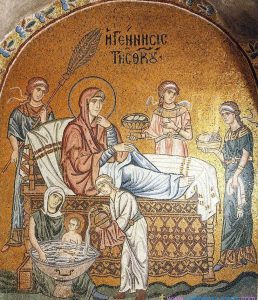 Christians of East and West can express their gratitude for today’s feast to brought to our awareness by Eastern monks. It was in the seventh century, this feast of Our Lady was celebrated by Greek Christians. The narrative of Mary’s Nativity is not testified to in sacred Scripture but known only from apocryphal sources. By the end of the seventh century this feast gained acceptance in the Diocese of Rome.
Christians of East and West can express their gratitude for today’s feast to brought to our awareness by Eastern monks. It was in the seventh century, this feast of Our Lady was celebrated by Greek Christians. The narrative of Mary’s Nativity is not testified to in sacred Scripture but known only from apocryphal sources. By the end of the seventh century this feast gained acceptance in the Diocese of Rome.
Our meditation for today
The Epistle today is from Philippians, and it is about Christ, “Rather, he emptied himself, taking the form of a slave, coming in human likeness; and found human in appearance, he humbled himself, becoming obedient to death, even death on a cross. Because of this, God greatly exalted him and bestowed on him the name that is above every name. (Philippians 2:7-9)” The mystery of Mary, the Theotokos, the Birth-giver of God, is united with the mystery of Jesus our Lord, the Giver of Life to all. Every feast is a celebration of the one Paschal Mystery, how through his death on the Cross (“by death trampling upon death”) the Son of God bestowed life upon the whole world, and how, therefore, in our humiliation, in giving ourselves in love to God and, through him, to each other, we find glory in God.
Joachim and Anna were humbled and desolate, barren of children, and yet, “from infertile ground, the fertile ground is born. From her has grown the Gardener (see that Mary Magdalene mistakes the risen Christ for a gardener) of all fruit, the flower bringing life, who by the will of God nourishes the universe. (1st Troparion, Ode 3, Matins of the Pre-feast)” Today we chant that “Joachim and Anne were freed from the reproach of childlessness.” This mystery must be re-lived in the life of Christ, the child born of Mary, who dies on the Cross in desolation, so that all the universe may be freed from the “despair of death,” and find life in God.
Meditation by Archpriest David Petras
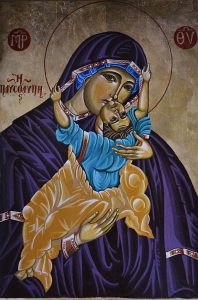 In addition to the myriad of feast days honoring Our Lady in her many titles and virtues, the entire month of May is especially given to her praise. In the words of Pope Paul VI: May is “a month which the piety of the faithful has long dedicated to Mary, the Mother of God . . . For this is the month during which Christians, in their churches and their homes, offer the Virgin Mother more fervent and loving acts of homage and veneration; and it is the month in which a greater abundance of God’s merciful gifts comes down to us from our Mother’s throne.”
In addition to the myriad of feast days honoring Our Lady in her many titles and virtues, the entire month of May is especially given to her praise. In the words of Pope Paul VI: May is “a month which the piety of the faithful has long dedicated to Mary, the Mother of God . . . For this is the month during which Christians, in their churches and their homes, offer the Virgin Mother more fervent and loving acts of homage and veneration; and it is the month in which a greater abundance of God’s merciful gifts comes down to us from our Mother’s throne.” Annunciation of Mary, the Mother of God (Theotokos), March 25th
Annunciation of Mary, the Mother of God (Theotokos), March 25th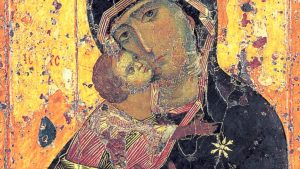 The following meditation opens an interesting question about Mary, the Mother of God (Theotokos means the bearer of God). A daughter of an Orthodox priest, Sister Vassa, a native of Nyack, NY, earned a doctorate in liturgical theology from the Pontifical Oriental Institute, Rome, now is a researcher and teacher in Vienna. She produces a the popular program, “Coffee with Sister Vassa.”
The following meditation opens an interesting question about Mary, the Mother of God (Theotokos means the bearer of God). A daughter of an Orthodox priest, Sister Vassa, a native of Nyack, NY, earned a doctorate in liturgical theology from the Pontifical Oriental Institute, Rome, now is a researcher and teacher in Vienna. She produces a the popular program, “Coffee with Sister Vassa.”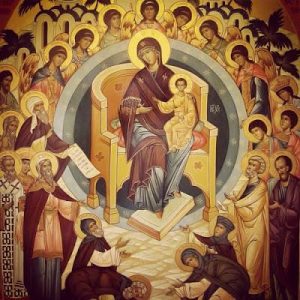 Today, the day after the Christmas feast the Byzantine Church honors Mary, the Mother of God (Theotokos) with a special feast day of remembrance.
Today, the day after the Christmas feast the Byzantine Church honors Mary, the Mother of God (Theotokos) with a special feast day of remembrance.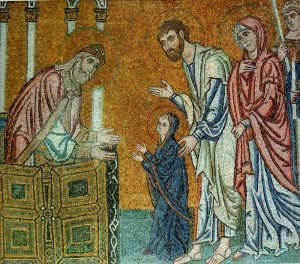 “The most pure Temple of the Savior; / the precious Chamber and Virgin; / the sacred Treasure of the glory of God, / is led today into the house of the Lord. / She brings with her the grace of the Spirit, / therefore, the angels of God praise her: / ‘Truly this woman is the abode of heaven.’” (Kontakion-Hymn of the Entry of the Theotokos into the Temple)
“The most pure Temple of the Savior; / the precious Chamber and Virgin; / the sacred Treasure of the glory of God, / is led today into the house of the Lord. / She brings with her the grace of the Spirit, / therefore, the angels of God praise her: / ‘Truly this woman is the abode of heaven.’” (Kontakion-Hymn of the Entry of the Theotokos into the Temple)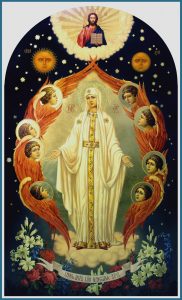
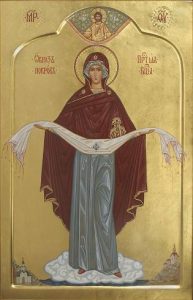 Meditation by Very Rev. Dr. David Petras
Meditation by Very Rev. Dr. David Petras